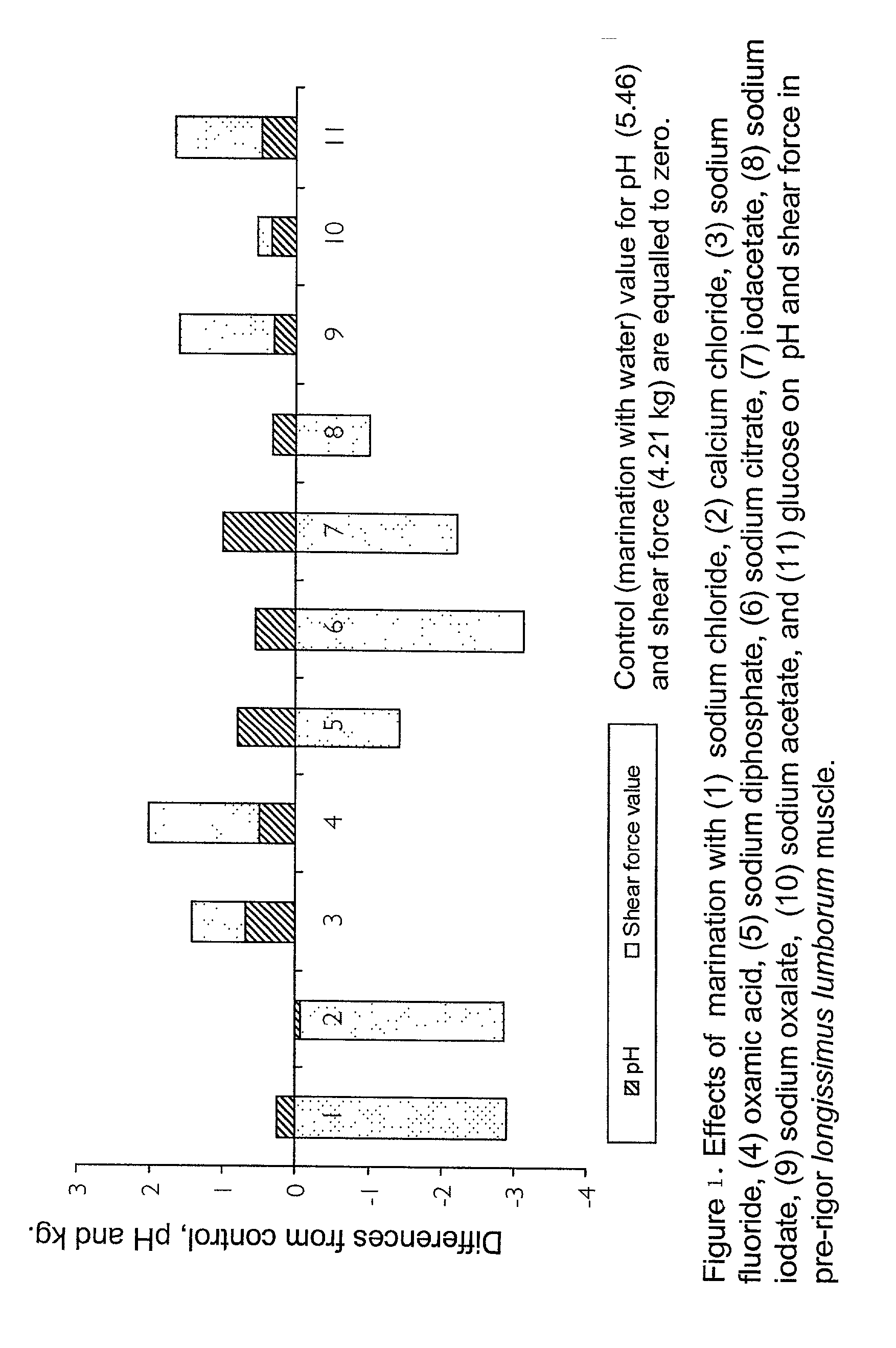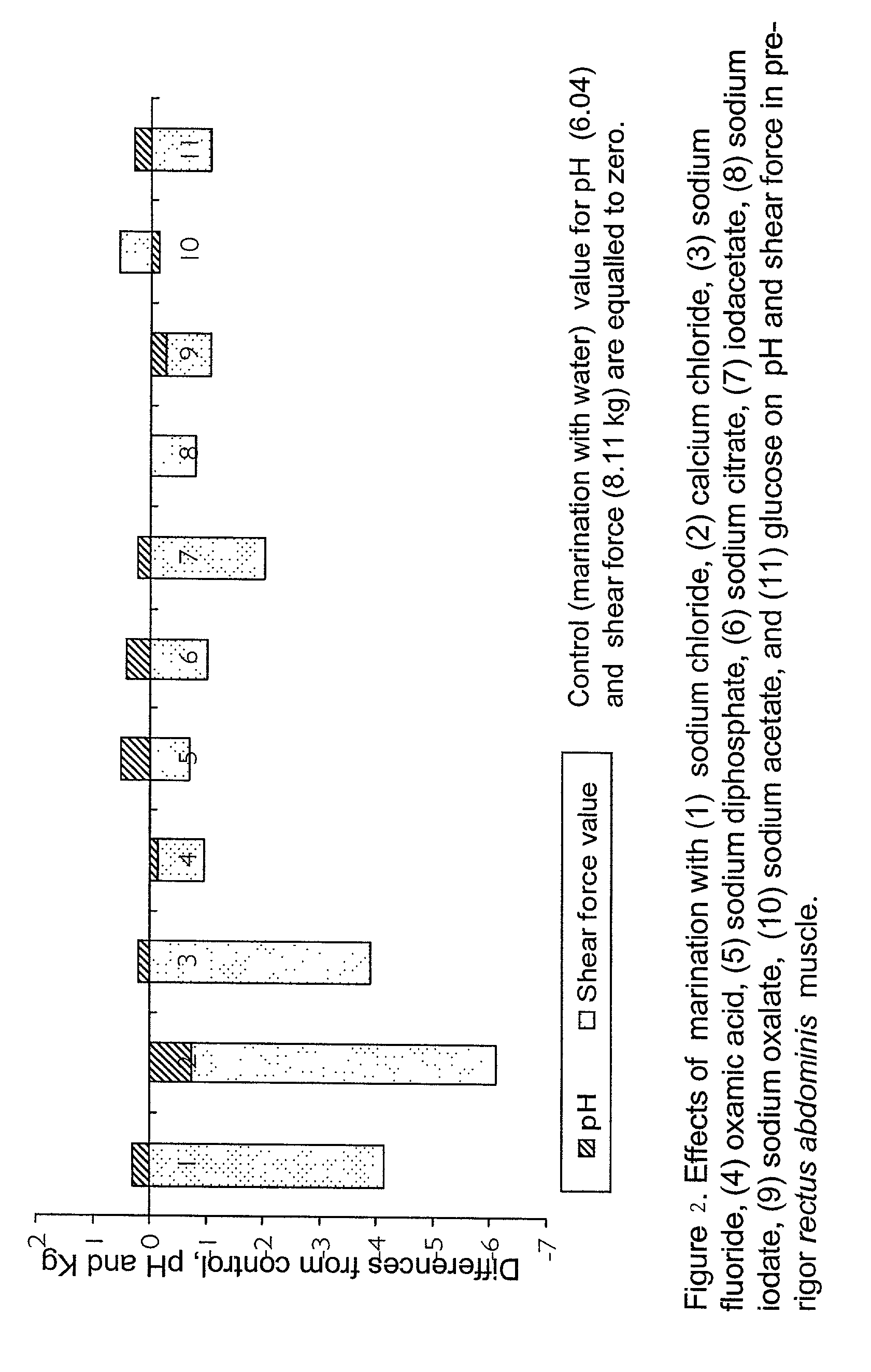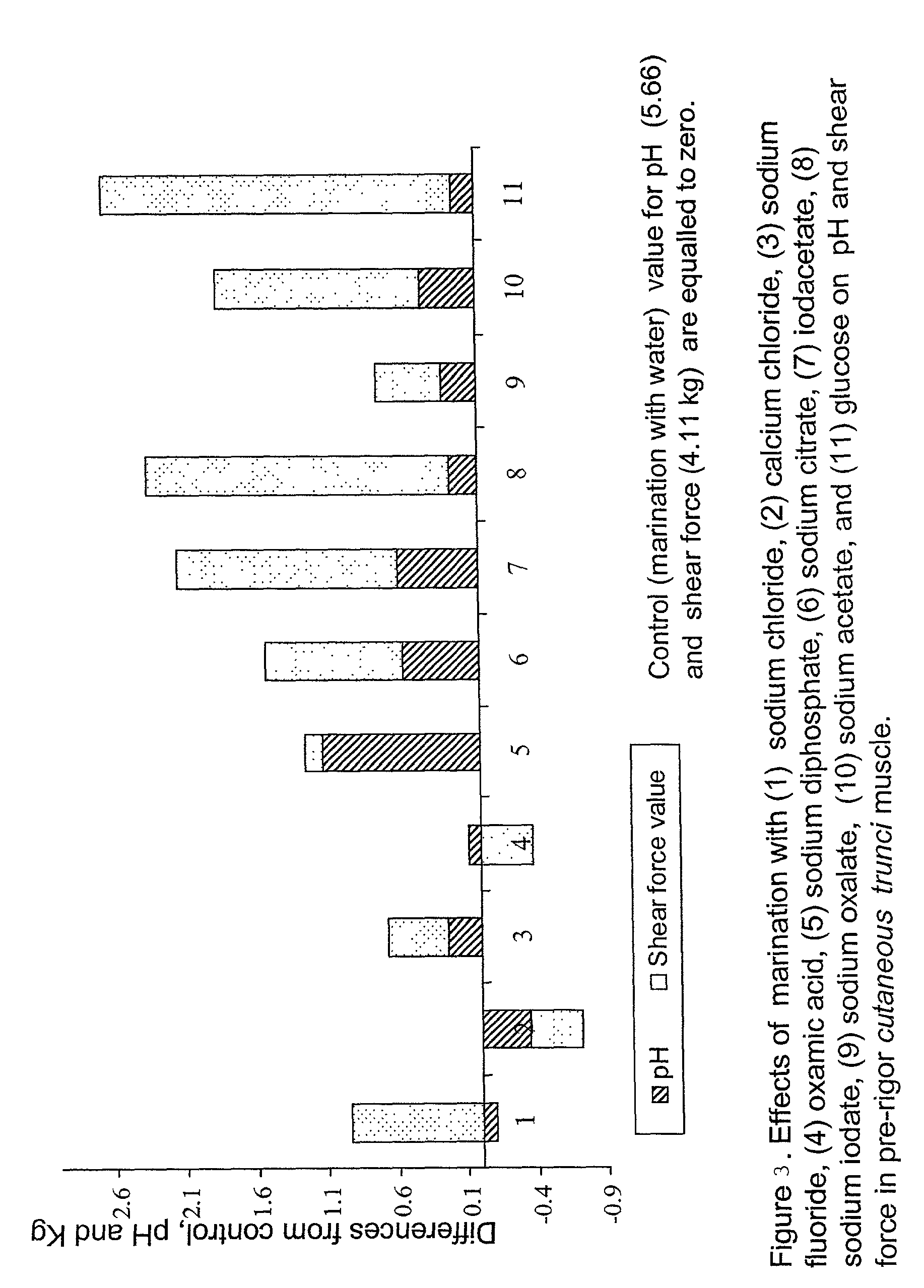Methods and compositions to enhance tenderness and value of meat
a technology of meat tenderness and value, applied in the field of enhancement of desirable attributes of meat, can solve the problems of increasing oxidative rancidity, reducing color stability of meat, and not reporting the effect of sodium chloride on meat tenderness of whole and unground muscle, so as to enhance the desirable attributes of meat and enhance the tenderness and other desirable attributes. , the effect of enhancing the desirable attributes
- Summary
- Abstract
- Description
- Claims
- Application Information
AI Technical Summary
Benefits of technology
Problems solved by technology
Method used
Image
Examples
example 1
Pre-rigor Injection of Whole Muscle
[0066] Experiment were conducted to test the effects of pre-rigor injection of several compounds. Effects of these compounds on pH, color, tenderness and other related traits of low-value beef cuts were investigated. Ten steers (22 to 24 mo of age, 515 to 676 kg live weight) were slaughtered according to current industry procedures. Pre-rigor semimembranosus (from the round), triceps brachii and supraspinatus muscles (from the chuck) were excised, after evisceration (approximately 1 hour post-mortem), from both sides of the carcass. Muscle sections were randomly assigned to the treatments: sodium citrate (NaC; 200 mM), sodium fluoride (NaF; 200 mM), sodium acetate (NaA; 200 mM), and calcium chloride (CaCl.sub.2; 300 mM). The control samples remained on the carcass at 2.degree. C. for 24 hours to simulate commercial conditions. Following a cooling, control muscles were removed from each carcass (4 replicates), vacuum packaged and transferred to the ...
example 2
Use of Sodium Citrate to Enhance Tenderness and Palatability of Pre-Rigor Beef Muscles
[0124] Experiments were conducted to evaluate the response in Warner-Bratzler shear force and consumer acceptability of muscles pumped pre-rigor with different concentrations of sodium citrate solutions, while maintaining skeletal restraint for 24 hours.
[0125] Thoracic limbs from 14 steers were chilled on the carcass (controls) or removed within 2 hours post-mortem and pumped to 10% of muscle weight with water, 200 mM or 400 mM sodium citrate solutions. The injections were performed at various sites along the muscle. The control remained on the carcass. Muscle pH and temperature were measured immediately prior to pumping. Experimental and control muscles were chilled at 2.degree. C. for 24 hours. Steaks (2.54 cm thick) were removed after 24 hours from the Infraspinatus, Supraspinatus and Triceps brachii muscles and were either frozen immediately or aged for another 6 days and then evaluated. A cons...
example 3
Preparing the Muscle for Treatment
[0139] In preparation for treatment of the pre-rigor muscle with the compositions of the invention, the muscle may be manually or mechanically removed from the skeleton. Alternatively, the entire carcass, or a portion thereof, could be treated with the muscle fully or partially attached to the skeleton.
[0140] General methods for treatment of muscle may be applied before or after application of the invention. Such methods might include, but are not limited to, the application of refrigeration, freezing, or other methods of temperature reduction. Steps might also be taken to alter the biochemical state of the muscle, like electrical stunning of the animal, electrical stimulation of the carcass or muscle, or other physical / mechanical manipulation (including tumbling and / or massaging with or without vacuum). Additionally or alternatively, it may be desired to reduce muscle size. This could occur by grinding, slicing, macerating, chipping, flaking, cutti...
PUM
 Login to View More
Login to View More Abstract
Description
Claims
Application Information
 Login to View More
Login to View More - R&D
- Intellectual Property
- Life Sciences
- Materials
- Tech Scout
- Unparalleled Data Quality
- Higher Quality Content
- 60% Fewer Hallucinations
Browse by: Latest US Patents, China's latest patents, Technical Efficacy Thesaurus, Application Domain, Technology Topic, Popular Technical Reports.
© 2025 PatSnap. All rights reserved.Legal|Privacy policy|Modern Slavery Act Transparency Statement|Sitemap|About US| Contact US: help@patsnap.com



